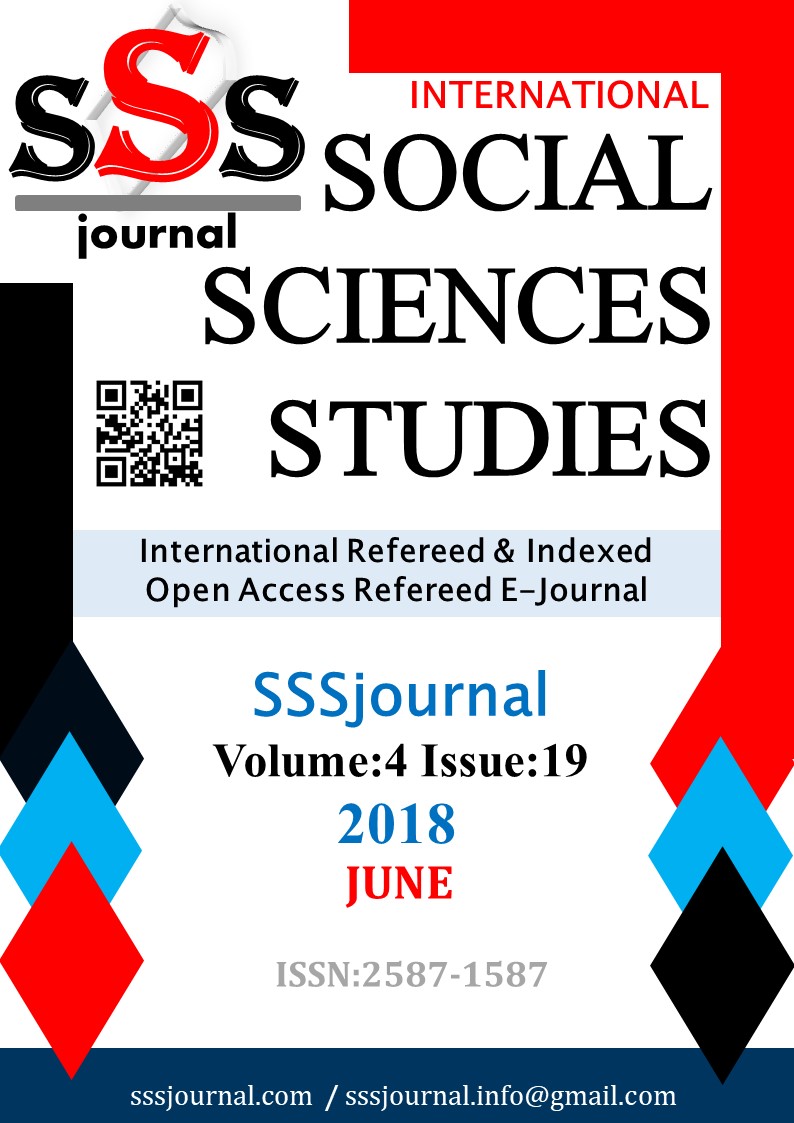Author :
Abstract
Bu çalışmada sosyal inovasyonun temel belirleyicileri göz önüne alınarak Türkiye’de kırsal kalkınma bağlamında gerçekleştirilmiş üç sosyal inovasyon uygulaması incelenmiştir.Bu uygulamalar sırasıyla yerel çiftçiler, sivil toplum kuruluşları ve yerel yönetimler önderliğinde gerçekleştirilen sosyal inovasyonlara örnek olarak Tire Süt Kooperatifi, TEMA ve Seferihisar Belediye’sinin ortaya koyduğu kırsal kalkınma faaliyetlerini kapsamaktadır. Çalışmanın amacı kırsal alanlarda ortaya konulmuş olan sosyal inovasyonların temel karakteristiklerinin ortaya konulması ve söz konusu başarılı sosyal inovasyonların ön koşullarının belirlenmesidir.
Keywords
Abstract
In this paper, regarding the essential drivers of social innovation, widely popularized three social innovation practices in Turkey are examined which are leaded by farmers’ cooperative (Tire Dairy Cooperative), NGOs (TEMA) and local public institution (Seferihisar Town Municipality). The aim of the study is to explore main characteristics and drivers of these successful social innovation practices occurred in the rural areas and determine the preconditions of these successful social innovation practises.
Keywords
- Arnaboldi M., Spiller N. (2011). “Actor-network Theory and Stakeholder Collaboration: The case of
- Arnaboldi M., Spiller N. (2011). “Actor-network Theory and Stakeholder Collaboration: The case of Cultural Districts”. Tourism Management, 32(3), 641-654.
- Bock, B.B. (2012). “Social Innovation and Sustainability; How to Disentangle the Buzzword and itsApplication in the Field of Agriculture and Rural Development”. Studies in Agricultural Economics, Volume 114(2), s. 57-63.
- Caulier-Grice, J. Davies, A. Patrick, R. Norman, W. (2012) “Defining Social Innovation”, A deliverable ofthe project: “The theoretical, empirical and policy foundations for building social innovation in Europe”.TEPSIE Project Report. European Commission – 7th Framework Programme, Brussels: European Commission, DG Research.
- Gunduz, C., Oner A. C., ve Knox, P. L. (2016). “Social resilience in Aegean Slow cities: Slow city Seferihisar”. Universal Journal of Management, 4(4), 211-222.
- Latour, B. (1996) On actor-network theory. A few clarifications plus more than a few complications, Soziale Welt, Vol 47, 369-381.
- Latour, B., (2005), Reassembling the Social: An Introduction to Actor-Network-Theory, Oxford University Press, Oxford.
- Law J., (1992). Notes on the theory of the actor-network: Ordering, strategy, and heterogeneity. Systemic Practice and Action Research, 5(4), pp.379-93.
- Moulaert, F., MacCallum, D., Mehmood, A., Hamdouch, A. (2013). “General Introduction: The Return ofSocial Innovation as a Scientific Concept and a Social Practice”, The International Handbook on Social Innovation. Cheltenham: Edward Elgar, s. 1-6.
- Mulgan, G., N. Wilkie, S. Tucker, R. Ali, F. Davis, T. Liptrot (2006) “Social Silicon Valleys-a Manifesto forSocial Innovation”, The Young Foundation, Erişim Tarihi: 25 Mart 2018, http://www.anobium.es/docs/gc_fichas/doc/5IMOVYfjkw.pdf
- Mumford, M. D. (2002). “Social Innovation: Ten cases from Benjamin Franklin”. Creativity Research Journal, 14, 253–266.
- Murray R., Caulier-Grice J. ve Mulgan G. (2010), The Open Book of Social Innovation, The Young Foundation, NESTA.
- Neumeier S. (2012), “Why do Social Innovation in Rural Development Matter and Should They beConsidered More Seriously in Rural Development Research?- Proposal for a Stronger Focus on Social Innovations in Rural Development Research”, Sociologia Ruralis, 52:1.
- Phills Jr. J, Deiglmeier K, Miller D. (2008). “Rediscovering Social Innovation”. Stanford Social Innovation Review Fall: 34-43.
- Pol, E., Ville S. (2009). “Social innovation: Buzz Word or Enduring term?”. Journal of Behavioral and Experimental Economics (formerly The Journal of Socio-Economics), 2009, vol. 38(6), 878-885.
- Somuncu, M. and Đnci, A. (2004). “Balancing Protection and Utilization in Overcoming Inaccessibility: ARural Development Model in a Mountainous Area of Turkey”, Mountain Research and Development, 24 (4): 307-311.
- Yalcin, S. Yalcin, S. (2013). “Sürdürülebilir Yerel Kalkınma icin Cittaslow Hareketi bir Model Olabilir mi?, Sosyal ve Beseri Bilimler Dergisi. Vol. 5(1),.32-41.
- Young, D., Borland, R. and Coghill, K. (2010) “An Actor Network Theory Analysis of Policy Innovation forSmoke-Free Places: Understanding Change in Complex Systems”. American Journal of Public Health, 100(7), 1208–1217.
